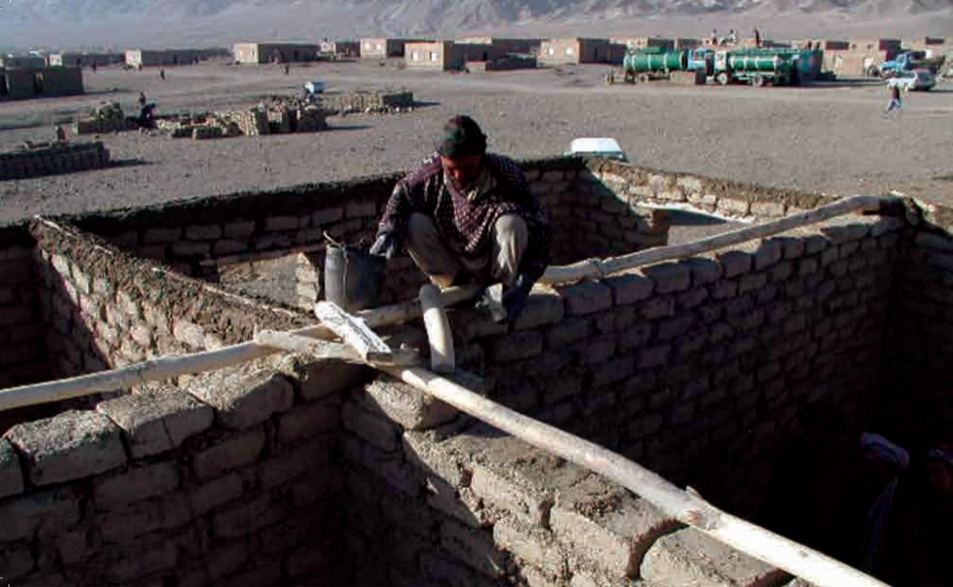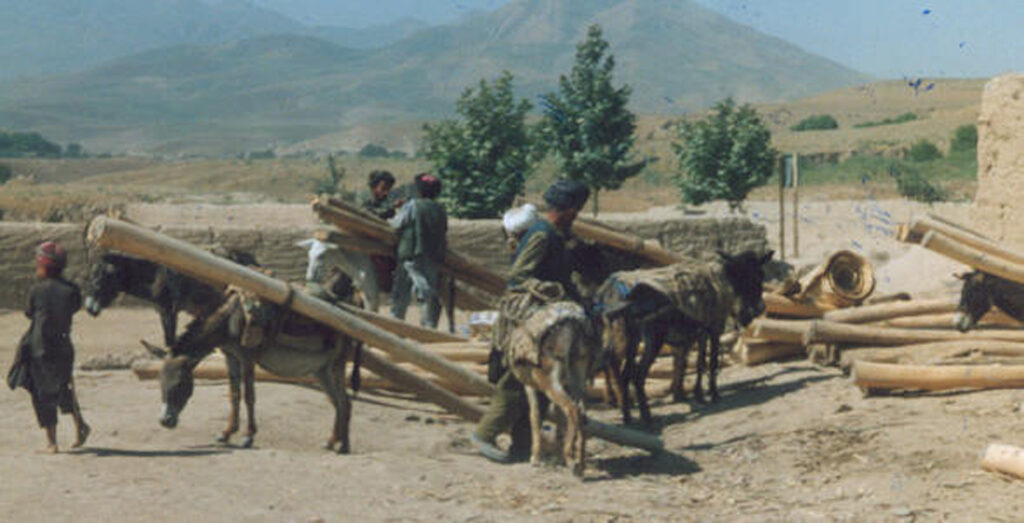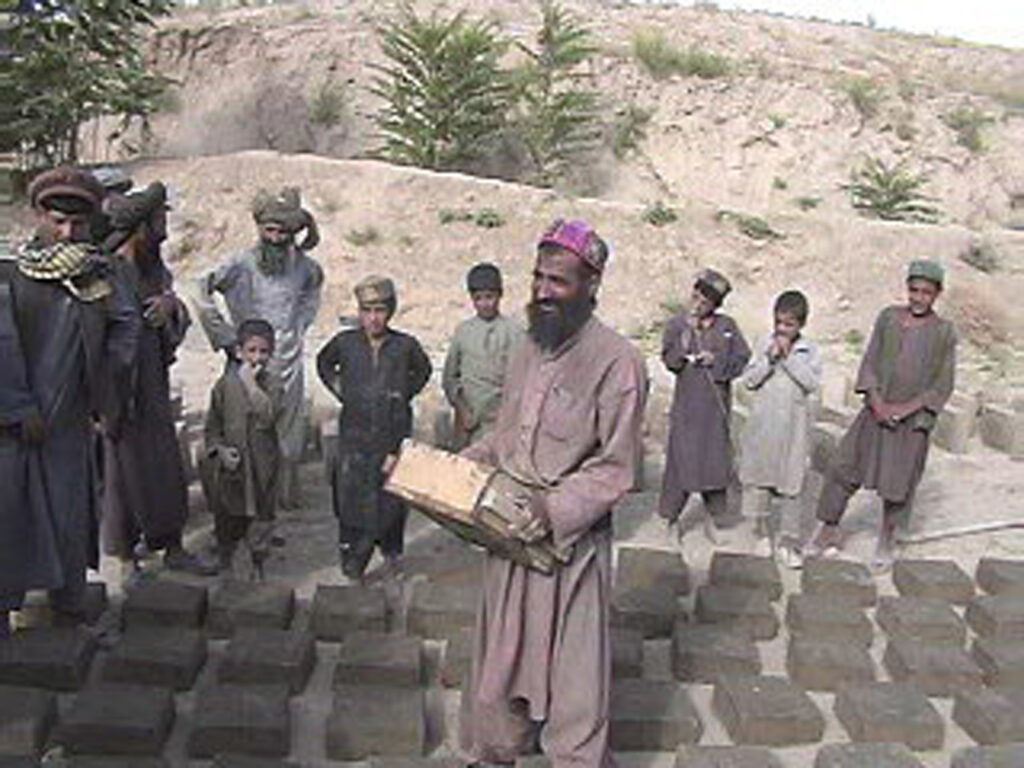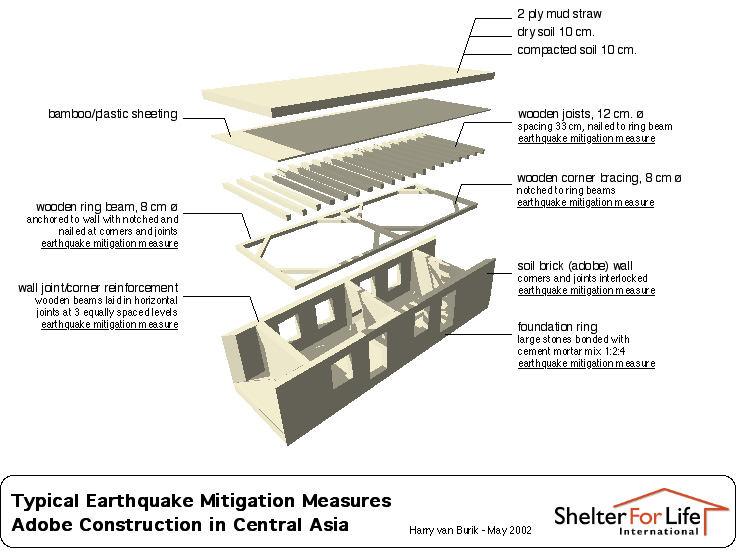
Wooden ring beams were installed to make the homes more earthquake resistant.
| Location | Baghlan Province, Afghanistan |
| Date | 2002 |
| Client | USAID Office of Foreign Disaster Assistance (OFDA) |
| End Client | 5,000 homeowners in 76 villages |
| Organization | Shelter For Life |
| Design Team | Robert Bjerre, Harry van Burik, Baghlan community members |
| Structural Engineers | Joe Settle, Mark Baltzer |
| Additional Consultants | Robert S. Yeats, Christopher Madden (Earth Consultants International); Chuck Setchell, James Smith (OFDA) |
| Major Funding | USAID Office of Foreign Disaster Assistance |
| Cost per unit | $610 |
| Area | 370 sq. ft./34.6 sq. m |
Shelter For Life, a nonprofit based in Oshkosh, Wisconsin, was founded in response to the Soviet Union’s invasion of Afghanistan in 1979.
When millions of Afghan refugees flooded into Pakistan and Iran, a small team of volunteers responded by building multipurpose geodesic domes to provide housing for widows and refugees.
The project established what would be a long-standing commitment to providing shelter to the displaced and disadvantaged in Afghanistan, and the organization’s subsequent projects would serve as a case study on the importance of developing local relationships.

More than 1000 donkeys were hired to transport materials.
For example, when an earthquake devastated a remote, mountainous area of the country in 1998, local ties enabled the group to respond effectively. “It was extremely hard to get to,” architect Harry van Burik, director of international programs for Shelter For Life said of the quake zone. “After our vehicle overturned during an assessment, we realized we had to use what I call appropriate transportation.” The group hired more than 1,000 donkeys to cart enough material across the Tajikistan border to build 500 homes with seismic-mitigation measures.
When another earthquake rocked the region in spring 2002, the group was called on to supply emergency shelter to some 30,000 people. Instead of providing winterized tents, Shelter For Life used its experience in the area to build permanent housing. For $610 per house, about the cost of a winterized canvas tent, the group enlisted the help of local residents to construct 5,000 adobe shelters in 76 villages over the course of a four-month period.
As many of the beneficiaries were also working to construct homes, the project offered an opportunity to provide training on seismic awareness and preparedness in the earthquake-affected communities. The group conducted more than 100 community workshops at local schools and mosques. Construction laborers and beneficiaries received on-the-job training in how to incorporate seismic-mitigation features, such as wooden ring beams anchored to the walls and reinforced corners, into shelter design and construction to help prevent damage in future disasters.

Future homeowners make interlocking adobe blocks.


Shelter For Life adopted the local vernacular to speed construction. All images Shelter For Life















READ OR LEAVE A COMMENT